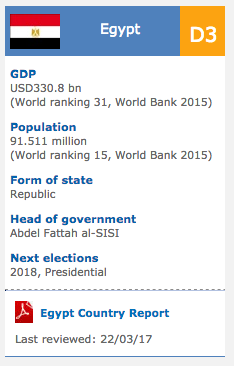Haiti: Haiti Art / Culture Profile 2012
2012/03/13
Haiti Art / Culture Profile 2012
The Culture of Haiti encompasses a variety of Haitian traditions, from native Taino customs to practices imported during French colonisation and Spanish imperialism. As in the cases of Cuba and the Dominican Republic (but to a much larger degree), Haiti is a nation with strong African contributions to the culture as well as its language, music and religion. French, Spanish, and to a lesser extent (food, art, and folk religion) Taino and Arab customs are present in society.
This page contains several simplified (sometimes overly-simplified to the point of being inaccurate) explanations of things that are often times much more complicated than the way they are presented here.
Music
Haitian Compas (sometimes written as Compas Direct, konpa direk, konpa, or kompa) is a musical genre as well as a dance that originates from Haïti. It was named «Compas Direct» by Nemours Jean-Baptiste on a recording released in 1955. The name derives from compas, the Spanish word meaning rhythm or tones. It involves mostly medium-to-fast tempo beats with an emphasis on electric guitars, synthesizers, and either a solo alto saxophone, a horn section or the synthesizer equivalent. Unlike zouk (which derives from compas), the lyrics are mostly in Haitian Creole.
Folklore often categorized into both European (Spanish & French mythology) and African folklore has become a part of Haitian culture. With it many musical styles have arisen due to its influences. The style of music most recognized in Haiti is the wildly popular Compas or "Kompa", a musical genre born of French and Spanish music combined with African-derived drumming and Haitian Creole-sung verses. Haiti's music (especially Compas) bears several similarities to its Spanish-speaking neighbors yet it is unique in its own right.
In North America, compas festivals take place frequently in Montreal, New York, Miami, and Boston.
Merengue of the Dominican Republic is fairly popular in Haiti. The true origins of the genre are not certain with both countries claiming to have invented it. The dance of the same name is considered by many to be the national dance of Haiti[1]; however, there is some controversy regarding its origins. Of the dance, one story alleges it originated with slaves who were chained together and, of necessity, were forced to drag one leg as they cut sugar to the beat of the drums; however, the most popular story relates that a great hero of the revolution who had been crippled in one leg was welcomed home with a victory celebration. It was known that he loved to dance but all he could do now, was step with one leg and drag the other to close. The imagery of both stories is important; both describe stepping side and dragging the other leg to close both. The similarly named Méringue is a distinct Haitian genre which is closely intertwined with that of its Dominican counterpart.
Festivals
The most festive time of the year in Haiti is during Carnival (referred to as "Kanaval" in Creole or Mardi Gras). The festivities start in February. The cities are filled with music, parade floats and people dancing and singing in the streets. Carnival week is traditionally a time of all-night parties and escape from daily life. Rara, a festival which occurs before Easter, is celebrated by a significant number of the population as well and its celebration has led to it becoming a style of carnival music. Many of the youth also attend parties and enjoy themselves at nightclubs called discos, pronounced in local slang as "deece-ko" (not like the discos of the U.S), and attend Bal. This term derives from the word ballad, and these events are often celebrated by crowds of many. Mainstream dance music is played all throughout.
Religion of Haiti
The most widely practised religion of Haiti is Christianity. Haiti is similar to the rest of Latin America in that it is a predominantly Roman Catholic country with 80%-85% professing Catholicism and approximately 20% professing Protestantism. A small but growing population of Muslims exists in the country, principally in the capital of Port-au-Prince.
Vodou, encompassing several different traditions, may contain a mix of Central and Western African, European and Native American (Taino) religions is also widely practiced despite the negative stigma that it carries both in and out of the country. It is more widespread in the rural parts of the country. The exact number of Vodou practitioners is unknown; however, it is believed that a significant amount of the population practice it, often alongside their Christian faith. Some Protestants also have been known to participate in some rituals, although indirectly. Strict Catholics in the country often see Vodou as a false religion used to scare people. The claim of the majority of Haitians practicing Vodou is frequently denied by the Haitian population both in the country and abroad.
Cuisine
The cuisine of Haiti is made-up of African influences that have been part of the diaspora
Diri ak Pwa: Rice and Beans, Griyo: Fried Pork, Kabrit: Goat, Sos poul: Chicken in sauce, Mayi moulen: Cornmeal, Sòs pwa: a bean sauce, Legume: Vegetables (okra, eggplant, tomatoes, and more ingredients), Poisson: Fish, Diri ak Let: A dessert composed of sweetened milk and rice, Banann Fri/Peze: (Fried Plantains, also popular in the Dominican Republic)Soup, eggs, meat, and sandwiches are what most Haitians enjoy for breakfast.
A preferred seasoning known as Epis in Haiti is commonly referred to as Sofrito by the rest of the region, a basic recipe goes as following:
Scallion, Celery, Red peppers, Green peppers, Cilantro, Onion, Garlic Vegetable Oil, tomatoes. (Optional, but used in some provinces.) All of the ingredients are blended together and a dash of sugar or marinade is added. Salt should not be included or substituted for this. This season is mainly used to condiment or prepare meats, cooked rice and/or stews.
- Haiti News
-
- ARUBA: Director of Tourism Turks and Caicos after Irma: Tourism, visitors, hotels current status
- AFGHANISTAN: UNWTO: International tourism – strongest half-year results since 2010
- AFGHANISTAN: Higher earning Why a university degree is worth more in some countries than others
- HAITI: Elections only way to stability in Haiti
- AFGHANISTAN: Global growth will be disappointing in 2016: IMF's Lagarde
- ARUBA: CARICOM and USAID reach agreement on development assistance for Caribbean
- Trending Articles
-
- SOUTH AFRICA: Nigeria and South Africa emerge from recession
- ARUBA: Director of Tourism Turks and Caicos after Irma: Tourism, visitors, hotels current status
- ANGOLA: Angola: Elections / 2017 - Provisional Data Point Out Qualified Majority for MPLA
- WORLD: How fair is our food? Big companies take reins on sourcing schemes
- BAHRAIN: Bahrain issues new rules to encourage fintech growth
- NIGERIA: Nigeria has been one of the hardest-hit economies due to its over-dependence on oil












